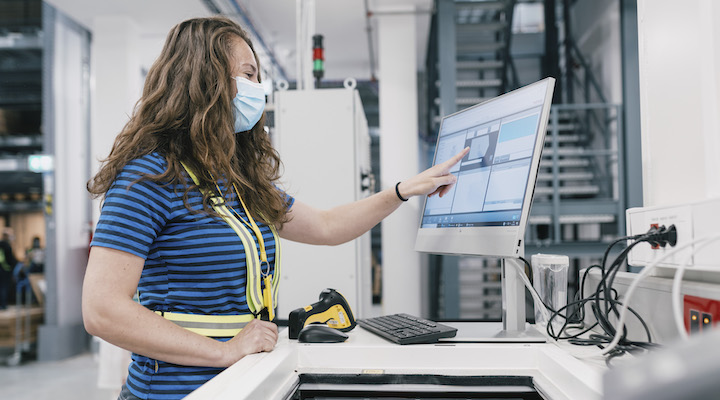Swisslog’s SynQ software uses an event-driven mechanism to adapt to decisions in real-time, and provide additional flexibility to customers and automation users
Everything that happens in an automated warehouse – from the simplest tasks to the very complex – can be classified as an “event” from the perspective of a WMS (warehouse management system) such as SynQ. For example, the confirmation of the number of goods in a box, or the deposit of a pallet on a shelf, would both be considered events of interest to external control and management systems, such as a WMS or ERP (enterprise resource planner).
Traditional WMS and ERP systems have typically used a request-driven software model, where the user sends a request through the software, and waits for a response before performing the next task. With event-driven software, the user generates an event and can immediately move to the next task. Event-driven management, supported by robust communication architecture, delivers results as close to “real-time” as one can achieve.
With Swisslog’s SynQ software, combining SOA (service-oriented architecture) with an event-driven mechanism, allows communication in real-time, including all significant warehouse events, as they occur. ERP systems can receive up-to-the-millisecond information on goods movement, malfunctions, human intervention in the warehouse, and a large range of other events.
Five benefits of using event-driven software
- High volume and speed of information delivery
One of the characteristics of Industry 4.0 systems is the management, in the shortest time possible, of huge amounts of data being communicated between external systems.
In the logistics industry, the availability of equipment is critical. Software products can optimise equipment availability, produce the required information, and report it directly to the nearest ERP. With an event-driven mechanism, SynQ can do this dynamically and in a way that can be customized to suit different customer needs. This level of customisation allows each of Swisslog’s customers to benefit from a familiar standard architecture, without losing the features that are distinctive to their unique operation.
- Real-time information
As e-commerce advances exponentially, new challenges are faced by the logistics industry. The most pressing is often the speed of the connection from order, to delivery, to the end customer. Retailers large and small are often hindered by the obsolescence of the information systems in place at logistics hubs.
But with an event-driven mechanism in place through SynQ, information is available in real-time, including vital data on warehouse stock and availability. This functionality actively supports the management and planning of orders and procurement, thereby reducing the time-to-market of goods to end customers, to the benefit of Swisslog’s customers.
- Everything is an event, therefore everything is traceable
The definition of an event can be extended to any aspect of a logistics system. Aside from the core business of a logistics site, we can see how in an automated warehouse, even the smallest machine alarm or malfunction can be notified externally in the form of an event.
These notifications can benefit the customer’s organisation or the supplier dedicated to monitoring the health of the automation system itself. For all Swisslog machinery, SynQ integrates these event notifications and management mechanisms into a 3D visualisation system that is directly integrated with the automation system.
- Traceability of goods in the warehouse
By extending the event concept to the movement of goods in a warehouse, this style of management allows SynQ to record each individual movement of goods, both in terms of stock, and changes in quantity, and also in terms of physical movement within the warehouse itself.
This allows administrators to – at any time – reconstruct movements of goods from shelves to loading/unloading areas, as well as the history of the goods, including quantities moved for a customer order, inventory, or stock maintenance.
The recording of these events in the short and medium term enables warehouse administrators to extract statistics on the workload of an individual machine, or the entire system, to regulate the flow of goods to and from the warehouse, based on the actual workload at any given time.
- Traceability of malfunctions in communication with external systems
One of the greatest advantages provided by an event-driven system lies in its traceability. Every action and reaction of the system at every level is recorded in SynQ and, where necessary, in the relevant interconnected systems.
Conclusion
When managing warehousing, supply chain, and logistics for the retail industry, flexibility, adaptability, and traceability are major advantages. SynQ WMS software uses an event-driven mechanism to deliver these benefits and provide real-time responsiveness to everything happening in an automated warehouse.
Speak to a Swisslog expert about how SynQ can help optimise your warehousing and logistics operations.






